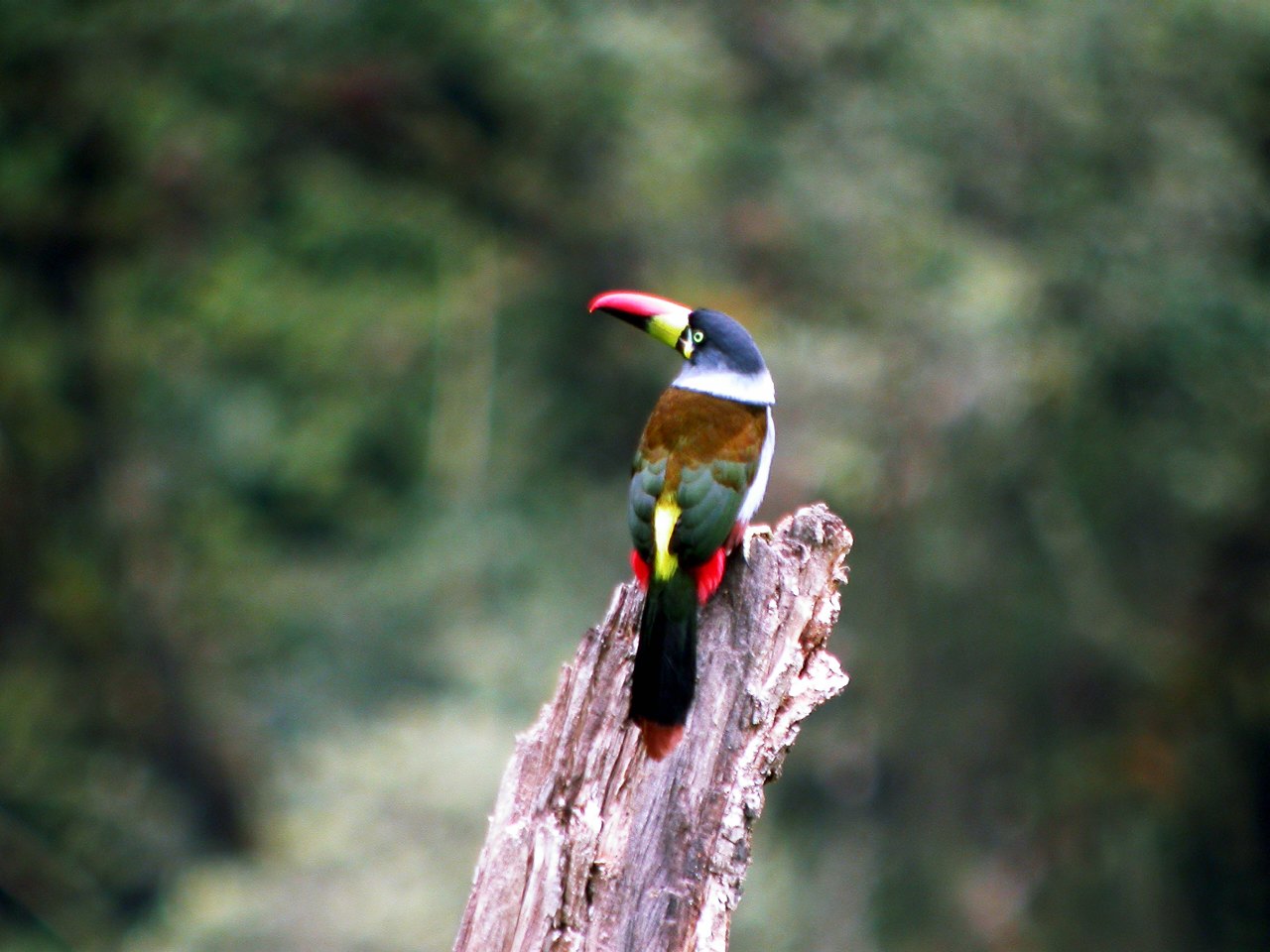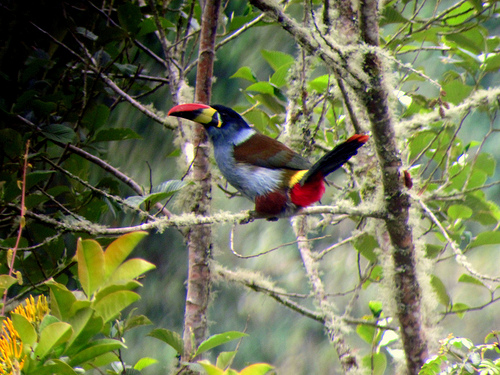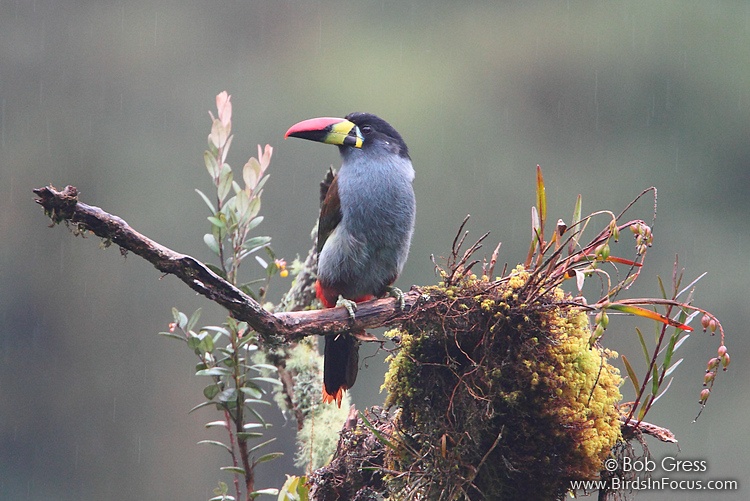
Andigena hypoglauca
TAXONOMY
Andigena hypoglauca Gould, 1833. This species shares the genus
Andigena with three other species of mountain toucans.
OTHER COMMON NAMES
French: Toucan bleu; German: Blautukan; Spanish: Tucбn
Andino Pechigris.
PHYSICAL CHARACTERISTICS
Length about 18 in (46 cm). Weight 12 oz (341 g) male; 10 oz
(287 g) female. Head is black, contrasting with pale gray collar
on nape and blue skin around eyes. Chest slaty blue; back and
wings bronze-green; tail is black with red undertail-coverts.
Distinctive multi-colored bill is red and black at the tip and
yellow-green at the base, with two black, oval “thumbprints,”
one on each side of the lower bill.
DISTRIBUTION
This species is restricted to the west slope of the central Andes,
from central Colombia through Ecuador to southeast Peru. Usually
occurs at higher elevations than all other mountain toucans.
HABITAT
Occupies montane rainforest and elfin forest from
5,900–11,300 ft (1,800–3,450 m), but typically not lower than
7,800 ft (2,400 m), where trees are draped with moss and other
epiphytes.
BEHAVIOR
An uncommon and secretive bird; habits are not well known.
Typically stays high in the canopy. The call is a series of nasal
rising pitches, repeated over and over at four- to five-second
intervals.
FEEDING ECOLOGY AND DIET
Not well known; Remsen et al. examined stomach contents of
14 specimens and found only fruit, particularly those of Cecropia
and blackberries; no arthropods or small vertebrates.
Feeds quietly, sometimes hanging upside down to reach fruits,
usually foraging alone or in pairs but sometimes in small, possibly
family, groups.
REPRODUCTIVE BIOLOGY
Not much known; adults with offspring have not been reported
by scientific observers. Males in breeding condition have been
collected in late January and early February.
CONSERVATION STATUS
Near Threatened due to rapid deforestation resulting from intensive
agrarian expansion, logging, and mining. The species
may also be threatened to a lesser extent by the international
cage bird trade.
SIGNIFICANCE TO HUMANS
A desired sighting for bird watchers.
Other popular Animals
Photo Gallery of - Gray-breasted mountain toucan




 Animalia Life
Animalia Life